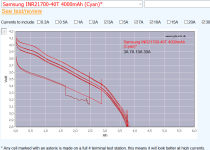ichiban
100 W
Guys,
I have some problems setting up CA3 with my new bike. This is the 1st time I test the whole bike :
My system :
+ CA3.14 + PR3 + GMAC 8T motor on rear wheel + Grin's thumb throttle + 26" MTB + 20S3P * Samsung21700-40T (72V nom/ 84V max) + JK JBD6A24S10P BMS (100A) + DIY 12-pulse PAS disk (to fit my bike) & Grin's cadence sensor. I bought most of Grin's parts to ensure compatibility
+ After adjusting PAS sensor close enough to magnetic disc. PAS sensor LED blinks 12 times exactly when I turn the crank 1 rev forward. Should be OK


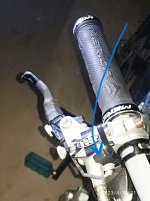
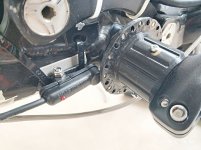
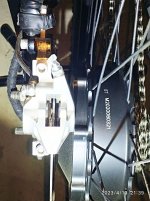
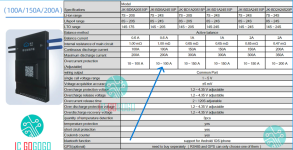
+ Setting CA3 according to Grin's manual and everything looks fine when rear wheel is up on a bike stand. Throttle (Grin's 3-pin) works, PAS OK, PR3 blinks, CA3 also show throttle ramps up. Fast & responsive
+ e-brake L & R sensor (2-pin each) in parallel plugged into single CA3's 4-pin connector (use only 3-pin). Both levers function properly, confirmed by moving brake lever icon on CA3 display every time I squeezed either or both. Also tested before with DMM for continuity - passed consistently. Shown Right magnet & reed switch as brake sensor (normally open) at arrow point. Did this many times with other bikes, never had any problems.
+ CA3 power limit set at 45A 2800w. I know it's wayyy too much. Just my 1st test.
"Throttle IN" :
0% Throttle :
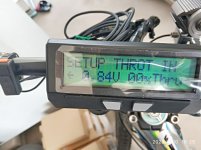
Half throttle :
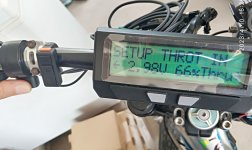
Max Throttle :
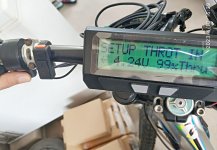
Mode : "Pass-thru"

I have some problems setting up CA3 with my new bike. This is the 1st time I test the whole bike :
My system :
+ CA3.14 + PR3 + GMAC 8T motor on rear wheel + Grin's thumb throttle + 26" MTB + 20S3P * Samsung21700-40T (72V nom/ 84V max) + JK JBD6A24S10P BMS (100A) + DIY 12-pulse PAS disk (to fit my bike) & Grin's cadence sensor. I bought most of Grin's parts to ensure compatibility
+ After adjusting PAS sensor close enough to magnetic disc. PAS sensor LED blinks 12 times exactly when I turn the crank 1 rev forward. Should be OK






+ Setting CA3 according to Grin's manual and everything looks fine when rear wheel is up on a bike stand. Throttle (Grin's 3-pin) works, PAS OK, PR3 blinks, CA3 also show throttle ramps up. Fast & responsive
+ e-brake L & R sensor (2-pin each) in parallel plugged into single CA3's 4-pin connector (use only 3-pin). Both levers function properly, confirmed by moving brake lever icon on CA3 display every time I squeezed either or both. Also tested before with DMM for continuity - passed consistently. Shown Right magnet & reed switch as brake sensor (normally open) at arrow point. Did this many times with other bikes, never had any problems.
+ CA3 power limit set at 45A 2800w. I know it's wayyy too much. Just my 1st test.
"Throttle IN" :
0% Throttle :

Half throttle :

Max Throttle :

Mode : "Pass-thru"



